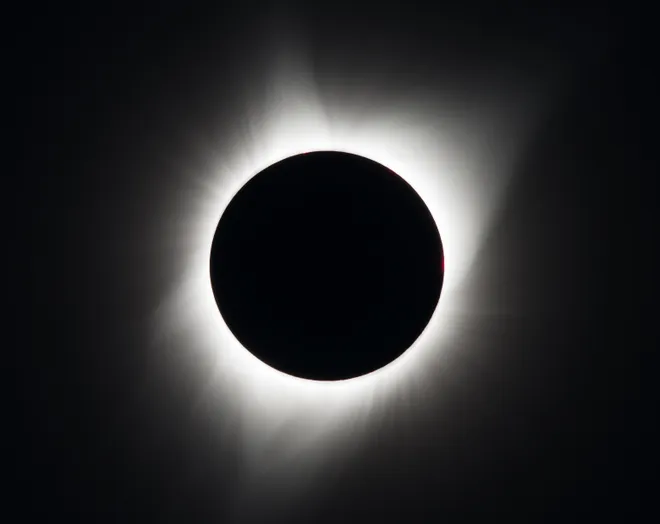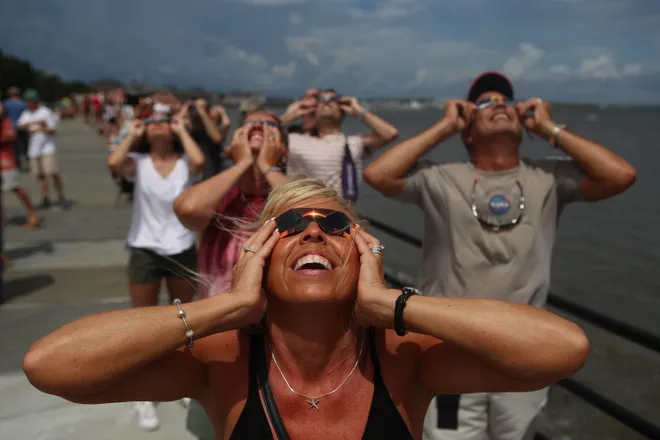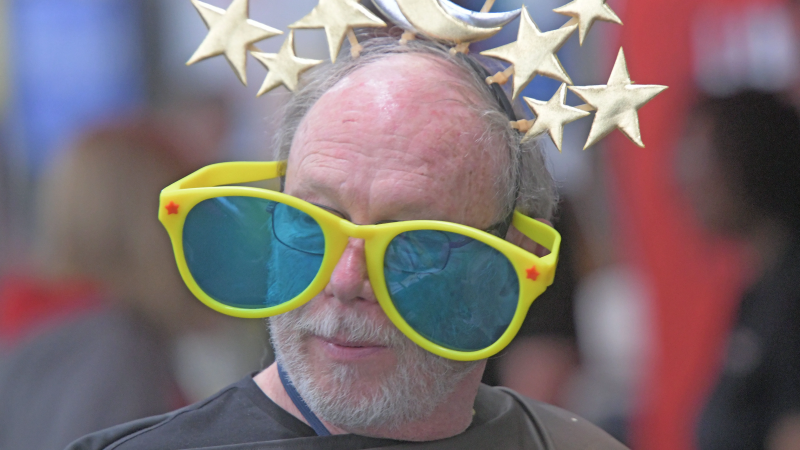The total solar eclipse is now 1 week away: Here's your latest weather forecast
The sky spectacle is just one week away.
Next Monday afternoon, April 8, a total eclipse of the sun will cross over a dozen states as it traverses from Texas to Maine. Millions of people are expected to travel to see it.
The full total solar eclipse experience will plunge people along a narrow path into darkness midday, but people outside the path of totality can still use eclipse glasses (maybe free eclipse glasses) to see the moon pass in front of the sun.
Here's the latest weather forecast for the day of the eclipse:
A grim forecast for Texas
Unfortunately, the weather is looking iffy for folks in some places, especially Southern areas: The cloud cover forecast "shows fairly high probability of clouds in Texas up through the Mississippi Valley," wrote meteorologist Matt Lanza on his blog The Eyewall.
The National Weather Service in Dallas said there's only a dismal 15% chance for favorable viewing conditions in Big D on April 8. "The outlook for favorable viewing conditions continues to deteriorate as the event approaches," the weather service said.

Indeed, the computer models that meteorologists use to forecast weather show a grim forecast for Texas: "The operational runs of both the GFS and European models have, consistently, shown nearly 100 percent cloud cover across much of the state during the early afternoon hours on Monday," said Eric Berger, a Houston-based meteorologist on the blog Space City Weather.
Another forecaster, Marc Chenard of the Weather Prediction Center, confirmed the gloomy forecast to USA TODAY: "Cloud cover is most likely in Texas, Oklahoma and Arkansas," he said. In fact, "varying degrees of cloudiness" are likely all the way to the Ohio Valley, he said.

Where is the best chance for clear skies?
The best chances for clear conditions are in New England and upstate New York, Chenard told USA TODAY.
"If I’m picking a place right now, it’s probably like Watertown, New York." Lanza said.
The National Weather Service in Buffalo is also bullish on the chances for good weather, with a caveat: The forecast continues to suggest dry weather for Monday with high pressure over the eastern Great Lakes and Ohio Valley, "however it is FAR too early to forecast cloud cover with any confidence or reliability," the weather service wrote in its forecast discussion.
Ironically, the prediction of clouds in Texas and clear skies in the Northeast are the opposite of historical trends for cloud cover.

How do I watch the 2024 solar eclipse, if clouds don't block it?
There are a few ways of watching the eclipse:
- Get the full experience in person: If you're in a narrow band of U.S. land that spans from Texas to Maine, you could see the moon block the sun and its shadow cast a night-like darkness over Earth for a few minutes. You could briefly be able to look up without eye protection and see the moon block the sun.
- Watch from outside the path of totality: Much of the U.S. could get a partial view of the eclipse that isn't nearly as impressive as being in the path of totality. Earth won't be plunged into complete darkness and you'll have to wear protective eyewear to see the moon partially block the sun.
- Watch a livestream: Check back on April 8 for a video feed from the path of totality. It's not the same as being there in person, but hey, at least you won't have to sit in traffic.
What time is the solar eclipse on April 8?
The eclipse will begin in Texas at 1:27 p.m. CDT and end in Maine at 3:35 p.m. EDT, but the exact time of the eclipse varies by where you are in its path.
Here are the major cities in each state where you can expect to experience totality (note that the included times do not account for when the partial eclipse begins and ends):
- Dallas, Texas: 1:40-1:44 p.m. CDT
- Idabel, Oklahoma: 1:45-1:49 p.m. CDT
- Little Rock, Arkansas: 1:51-1:54 p.m. CDT
- Poplar Bluff, Missouri: 1:56-2:00 p.m. CDT
- Paducah, Kentucky: 2-2:02 p.m. CDT
- Carbondale, Illinois: 1:59-2:03 p.m. CDT
- Evansville, Indiana: 2:02-2:05 p.m. CDT
- Cleveland, Ohio: 3:13-3:17 p.m. EDT
- Erie, Pennsylvania: 3:16-3:20 p.m. EDT
- Buffalo, New York: 3:18-3:22 p.m. EDT
- Burlington, Vermont: 3:26-3:29 p.m. EDT
- Lancaster, New Hampshire: 3:27-3:30 p.m. EDT
- Caribou, Maine: 3:32-3:34 p.m. EDT
Will clouds really ruin the eclipse?
Clouds are just part of weather, and as noted in the latest forecast, it's likely that some of the millions of people in the path of totality for April's total eclipse will have to endure overcast skies that will impact the experience.
But determining how clouds would change your view depends on the types of clouds – and which expert you ask. Some advise eclipse watchers to not worry about the skies, others say an overcast sky can ruin the experience.
Before last year's annular solar eclipse, National Weather Service meteorologist Tim Daldrup told Oregon Public Radio that if clouds are in the forecast, you should hope for the "right kind of clouds."
“If we want to see it, we’ll want the higher-level clouds,” Daldrup told OPR. “Those tend to be the more feathery cirrus clouds that can still be seen through. They might obstruct the eclipse but you can still see it.”
Cirrus clouds would be in contrast to some of the more eclipse-unfriendly clouds, such as a thick deck of lower-level stratus or cumulus clouds that would likely completely block the sun.
Disclaimer: The copyright of this article belongs to the original author. Reposting this article is solely for the purpose of information dissemination and does not constitute any investment advice. If there is any infringement, please contact us immediately. We will make corrections or deletions as necessary. Thank you.







